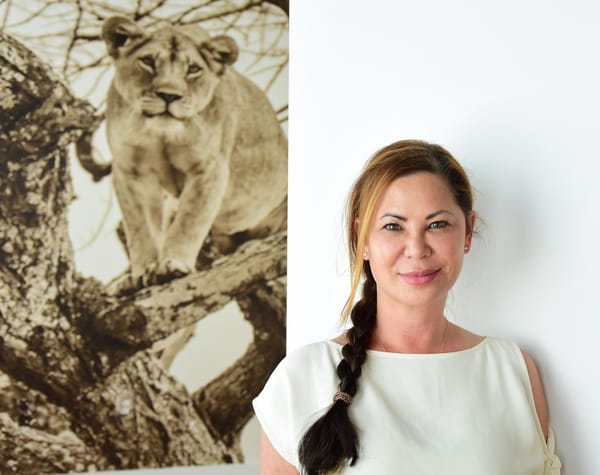.jpg)
Erik with his daughter, Rebecca.
Last year, Erik Bruun stepped into the job of CEO at SoCo Creamery. This isn't his first engagement in a notable South County institution, though; he's a founding board member of both Railroad Street Youth Project and Project Native. His unexpected involvement in the day-to-day business at the ice cream shop has turned out to be a rewarding career move, as he gets to spend more time in the community, in the heart of downtown Great Barrington. Besides, he says, "I have an 11-year-old daughter who is delighted I'm involved." I've lived here since 1984. My extended family had a second home in Tyringham and I visited shortly after college. I was about to start my job search, thinking I would have a career in New York City but not knowing what I wanted to do. I was alerted to a new weekly newspaper starting up in Canaan, Connecticut that might need a reporter. Having no journalism experience, I was hired on the spot because they were three days away from deadline. A year later I was working at the Berkshire Eagle. I run a small investment fund on Main Street in Great Barrington. One of those investments is the Berkshire Opportunity Fund, started 10 years ago, which invests in local companies including SoCo Creamery. A year-and-a-half ago, I got involved in SoCo directly. Initially, I thought it would be a temporary task but I now oversee operations. I like the direct engagement with the town and helping enliven and give back to the shop — it's an attractive and vibrant part of the community. My work includes the wholesale business as well, which has lots of different challenges but, overall, it's a fun business because ice cream provides a medium for lots of different flavors and creativity. No one goes into an ice cream shop in a bad mood. Every adult has a "rosebud experience" with ice cream. It evokes memories of delight. And to be associated with that is great. Around 1999-2000, there was a heroin epidemic in South County, as well as an eruption of really serious issues for young people. The community came together because they wanted to do something about it. There was a 19-year-old woman named Amanda Root who suggested we ask the young people what they want. A bunch of people listened. One of them was Julianne Boyd, artistic director at Barrington Stage, and they ended up doing a play. It was a successful event and people were turning to Amanda, asking her what she was going to do now. There was money left over from the play and she used that to start the Railroad Street Youth Project (RSYP), where young people themselves provide the direction of programming. I got involved and, for basically 10 years, was president of the organization. RSYP emerged out of a crisis for young people, not directly around "don't do drugs" but to empower youth so that they have a voice in their own lives and community. South County is a destination point for a lot of people outside of South County. As we come in, it's very easy to overlook what's already here and the value of that. What RSYP does is look at our young people as resources of the community, nurture that and really see the added value of people and institutions that are already here. Downtown Great Barrington has always been a hub because there are three state roads that overlap on Main Street: Routes 7, 41 and 23. It's not like Lenox, where you have to work to get there by getting off a main road; there is no way to avoid it. The downtown has really changed because of the mix of businesses, restaurants and retail stores. The quality of restaurants has improved in the last 30 years. What hasn't changed is the eclectic mix of people who live here, from families who have lived in South County for generations to aging hippies with alternative lifestyles, mixed in with New Yorkers. For me, that diversity makes for a very comfortable place to live.








